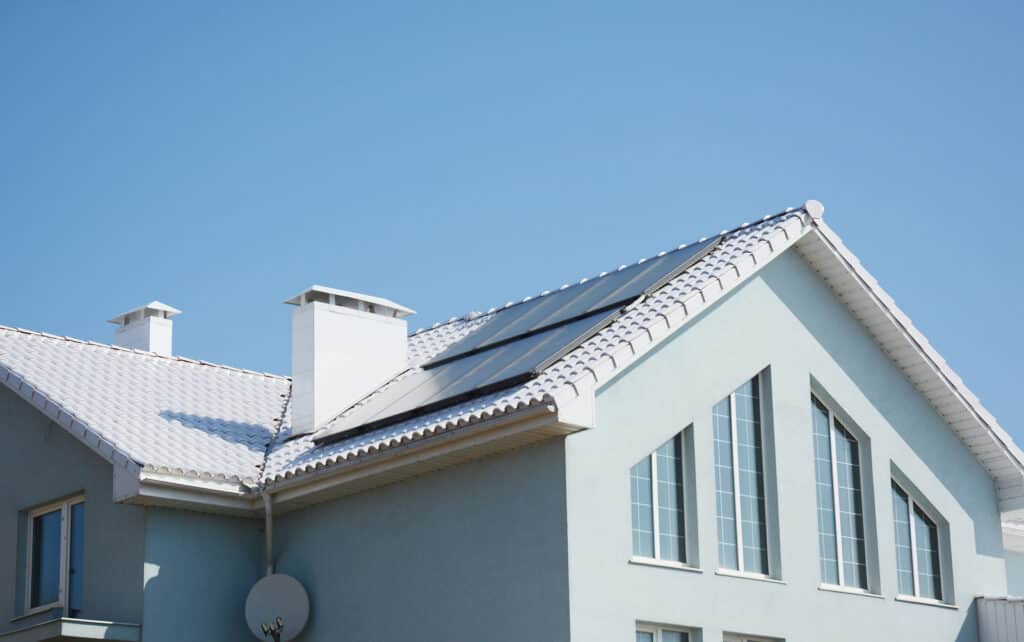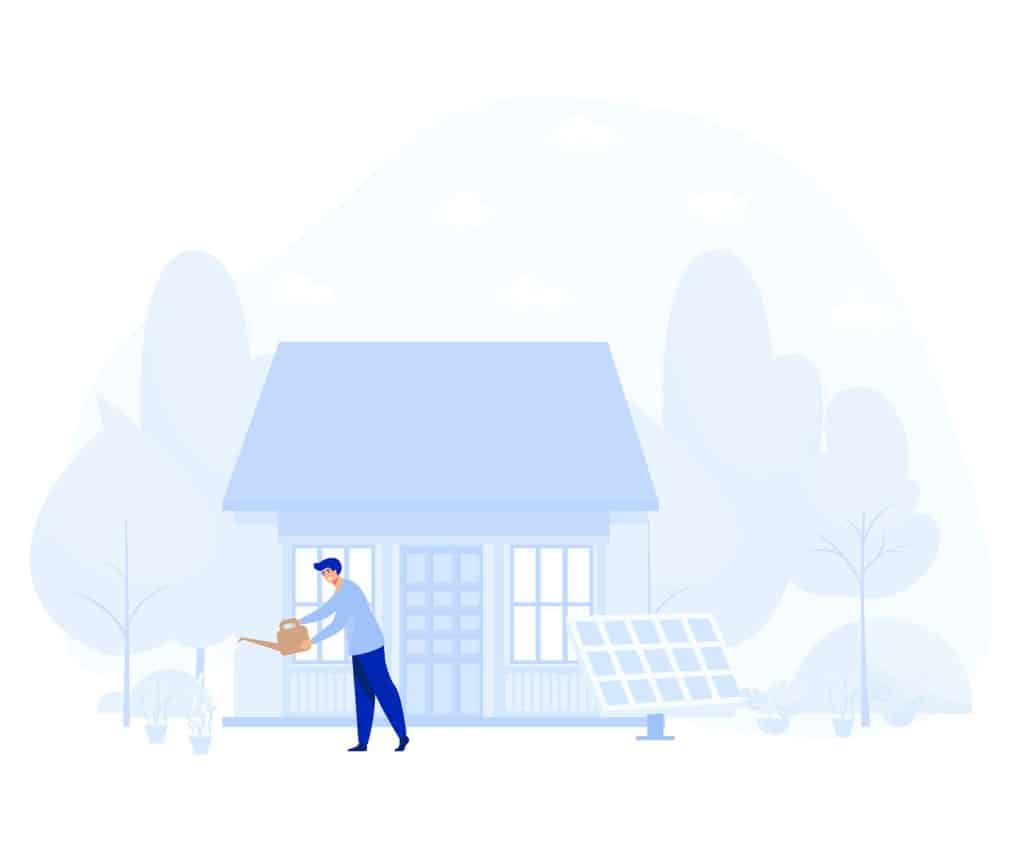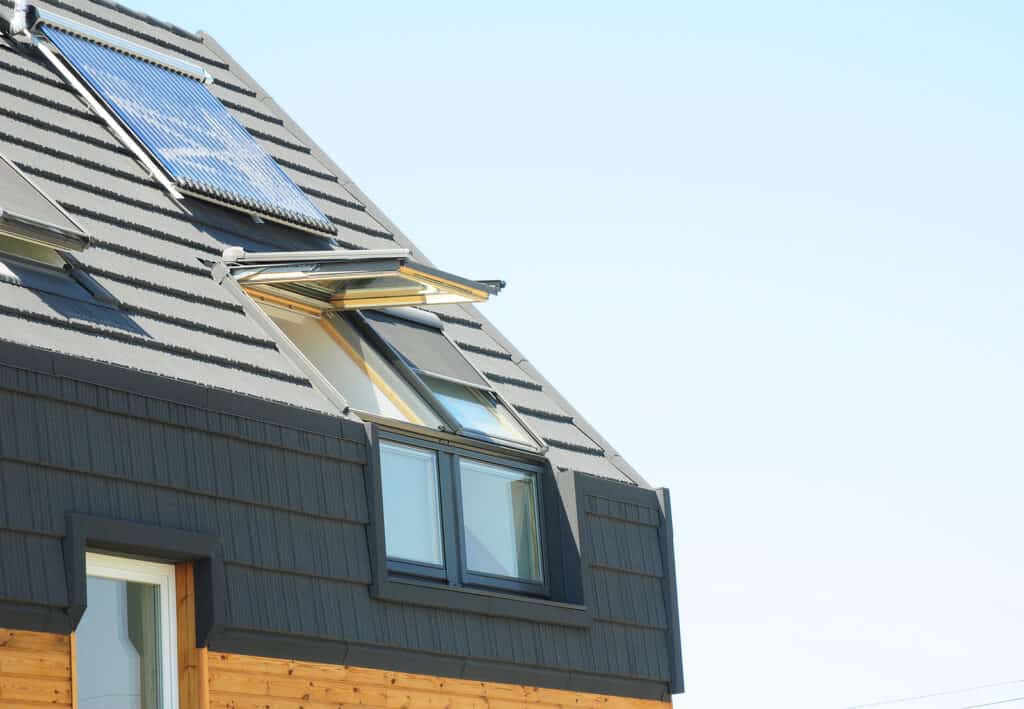The Benefits of Embracing Passive Solar Design: How to Harness the Sun's Energy for Your Home Solar Design passive
My family and I have always been passionate about sustainable living, and harnessing the sun's energy has been at the forefront of our discussions for years.
As we explored the latest technological advances and deepened our understanding of energy use, we realized there's a world of options out there to harness solar energy.
We were particularly excited when we stumbled upon passive solar design – it seemed like the perfect match for our family’s aspirations.
The passive solar design harnesses the natural energy of the sun by cleverly using building materials and the sun’s trajectory to keep our home warm in the winter and cool in the summer.
My family was especially keen on improving our indoor air quality, and the natural ventilation aspect of passive solar design piqued our interest.
This blog post is a reflection of our journey and an insight into how, like us, you can tap into the sun's energy to create a cozier, healthier home for your family through passive solar design.
Understanding Passive House Solar Design
At the heart of sustainable building practices lies passive solar design. This innovative approach emphasizes the use of the sun's energy, completely eliminating the need for mechanical systems or active solar technologies such as photovoltaic cells or solar hot water heaters.
The passive solar design leverages the innate energy properties of certain building materials, strategic architectural planning, and a nuanced understanding of the local climate to create a home environment that is simultaneously cozy, well-lit, and well-ventilated.
Passive solar design operates on a profound respect for nature's provisions. It's a system that capitalizes on the building materials' thermal properties, choosing those that can effectively absorb, store, and distribute the sun's heat.
This ensures a naturally warm environment during colder months and a cooler one during warmer periods.
Moreover, the core elements of passive solar design are closely tied to the building's design.
By incorporating architectural features like large south-facing windows (in the northern hemisphere), strategically placed vents, and heat-absorbing walls, the sun's energy is optimized for home use.
The building layout, orientation, window placement, and other design elements are all thoughtfully planned to balance the home's temperature throughout the year.

What are the 5 Elements of Passive Solar Design?
The efficacy of passive solar design lies in the thoughtful application of its fundamental principles. Let's delve deeper into these principles to better understand their role and significance in the passive solar design process.
Orientation
The orientation of a building is critical in the world of passive solar design. Structures are strategically positioned to take advantage of the sun's trajectory across the sky. During the cooler winter months, buildings are oriented to absorb the maximum amount of sunlight, capturing the sun's energy when it is needed most. Conversely, in the heat of summer, building orientation is such that it minimizes the impact of the sun's rays, reducing the amount of solar heat gain and helping to keep the interior cool.
Insulation
Ensuring robust insulation is crucial in any energy-efficient building design, but it holds special importance in passive solar design. Proper insulation acts as a thermal barrier, reducing heat transfer between the building's interior and the outside environment. This means that in winter, the heat captured during the day is retained within the building rather than being lost to the cold outside air. Similarly, in summer, insulation prevents the hot external air from infiltrating and warming up the interior, aiding in maintaining a cool indoor climate.
Thermal Mass
In the context of passive solar design, thermal mass refers to materials that have the ability to absorb, store, and slowly release heat over time. Materials with high thermal mass, like concrete, brick, or stone, can soak up heat from the sun during the day and gradually release it as temperatures drop at night. This helps to moderate indoor temperature fluctuations, keeping the building warm in the winter and cool in the summer.
Ventilation
An often overlooked, yet vital, component of passive solar design is natural ventilation. By strategically placing windows, vents, and openings, it's possible to create a natural airflow within the building. This airflow can draw in cooler air and expel warmer air, effectively cooling the building during warmer months. Moreover, natural ventilation promotes improved air quality by reducing the need for air conditioning and continuously refreshing indoor air.
Daylighting
Harnessing natural light, or daylighting, is a key principle of passive solar design. By intelligently positioning windows, skylights, and other openings, daylighting techniques illuminate the home's interior, reducing the need for artificial lighting. This not only saves energy but also creates a more pleasant and naturally lit living environment. Well-executed daylighting takes into account the sun's path throughout the day and year, ensuring consistent, even lighting across seasons.
Passive Solar Energy Advantages and Disadvantages of passive solar energy
Pros of passive solar energy
The implementation of passive solar design principles in a home can offer a wealth of benefits. These advantages range from substantial financial savings to noteworthy environmental impacts, as well as several other perks that may be less obvious but are equally valuable. Let's explore these benefits in greater depth:
Superior Energy Efficiency and Substantial Cost Savings
At the forefront of the advantages of passive solar design is its unparalleled energy efficiency, which directly translates into tangible cost savings. This design strategy enables a house to harness natural energy from the sun, making the dwelling less reliant on costly and finite resources such as electricity or gas. As a result, homeowners can experience significant reductions in their monthly utility bills.
Studies have shown that a house designed with passive solar principles in mind can achieve a striking reduction in heating costs, ranging from 50 to 75% (NEF, 2021). This is not only a boon for your pocket but also a practical step towards sustainability. Such efficiency and cost-effectiveness make passive solar design an attractive choice for new constructions and renovations alike.
Champion of Environmental Conservation
Passive solar design is not just about cost savings; it's a veritable champion of environmental conservation. By minimizing reliance on fossil fuels, homes utilizing this design strategy contribute to a reduction in harmful greenhouse gas emissions, which are a significant factor in global climate change.
What makes passive solar design even more remarkable is its sustainable use of the planet's natural resources. This design concept harnesses the energy from the sun and leverages the cooling power of the air and the earth's thermal mass, achieving impressive energy efficiency without depleting any resources.
Enhanced Indoor Air Quality
A perhaps less evident but no less important benefit of passive solar design is its contribution to improved indoor air quality. The design's reliance on natural ventilation reduces the need for artificial air conditioning systems, which often circulate dust and allergens, negatively impacting indoor air quality.
Through passive solar design's strategic use of windows, vents, and openings, fresh air continually circulates throughout the home, ensuring a healthy and pleasant indoor environment. This benefit is of particular interest to homeowners with allergies or respiratory conditions, as well as those who simply value a fresh, clean living space.
Boost to Home Value
Lastly, an often overlooked advantage of investing in passive solar design is the potential increase in your home's value. As public awareness and interest in energy efficiency and sustainability rise, homes incorporating these principles are becoming increasingly desirable.
Improved Comfort
The strategic use of the sun's energy in passive solar design results in consistent indoor temperatures throughout the year. The design ensures warmth during the winter and coolness during the summer, significantly enhancing comfort. With the thoughtful placement of windows and materials, daylighting can also improve a home's aesthetics and comfort.
Low Maintenance
Unlike active solar systems that require mechanical parts, passive solar design elements are typically incorporated into the building's construction, such as windows, walls, and floors. This results in lower maintenance requirements over time, as there are no moving parts that might need frequent servicing or replacement.
Energy Independence
By harnessing solar power, homeowners can achieve a degree of energy independence. This is particularly useful during times of energy price hikes or power outages. With a well-designed passive solar home, you'll always have a source of heating, cooling, and lighting.
Long-term Sustainability
Passive solar design is a sustainable choice not just for the environment but for long-term living. These homes are designed to perform efficiently for many years, often outliving conventional designs in terms of durability and longevity.
Cons of passive solar energy
While the benefits of passive solar design are numerous, it is equally important to acknowledge a few potential challenges or disadvantages that may be encountered. Here are three of the most notable:
Initial Costs and Design Complexities
One of the main disadvantages of passive solar design is the initial investment required. Designing a home that efficiently harnesses the sun's energy can be more complex and potentially more expensive than traditional building designs.
Geographical and Climate Limitations
Passive solar design is heavily dependent on the building’s location and local climate. Not all regions have enough sunlight exposure throughout the year to make passive solar design viable or efficient.
Overheating Risks
While the principle of harnessing solar energy for heating is beneficial in colder months, it can pose a risk of overheating during warmer periods. If not properly designed to account for seasonality, an active solar energy home can become too warm in the summer, leading to discomfort.

How to Implement Passive Solar Design in Your Home
If you're intrigued by the myriad benefits of passive solar design and are contemplating how to incorporate these principles into your own home, here are some detailed suggestions to guide you on this journey:
Engage a Qualified Architect or Designer
Your first step should be to engage a skilled architect or designer with a solid understanding and experience in passive solar design. A professional will be able to integrate the core principles of this design philosophy effectively, creating a home that's not only energy-efficient but also aesthetically pleasing and comfortable. They'll know how to analyze the local climate, optimize the use of materials, and design a layout that best harnesses the sun's energy.
Optimize Your Home's Positioning
The positioning and orientation of your home play a pivotal role in maximizing the sun's energy. This is especially important in the northern hemisphere, where the majority of your windows should face south to capture the maximum amount of sunlight during winter months. A professional designer can help you determine the optimal orientation based on your specific geographic location and the sun's path throughout the year.
Leverage Materials with High Thermal Mass
The choice of building materials is crucial in passive solar design. Opt for materials with high thermal mass, such as concrete, brick, or stone. These materials have the unique ability to absorb and store heat during the day and then gradually release it as temperatures drop at night. This natural process can help regulate indoor temperatures and reduce the need for active heating or cooling systems.
Prioritize Insulation and Air Sealing
Insulating and sealing your home properly is a key aspect of passive solar design. A well-insulated home will keep warmth inside during the winter and block out heat during the summer. It's essential to insulate not only the walls and roof but also floors and windows. Additionally, air sealing — the process of closing off small cracks and gaps where air might leak in or out — can further enhance your home's energy efficiency.
Install Energy-Efficient Windows
Windows are an integral part of passive solar design. They're the gateway for sunlight to enter your home and can also serve as an effective means of heat retention. Opt for energy-efficient windows that can allow sunlight in while minimizing heat loss. Double-glazed windows or those with low-emissivity (Low-E) coatings are excellent choices. Their design minimizes heat transfer, keeping your home warmer in the winter and cooler in the summer.
Design for Natural Ventilation
Finally, factor in natural ventilation in your passive solar design. By strategically placing windows, vents, and openings, you can create a natural airflow that cools your home during the hotter months. This not only reduces the need for air conditioning but also promotes a healthier indoor environment by continuously refreshing the indoor air. Consider features like operable windows, vented skylights, or transom windows to enhance your home's ventilation.
Thermal Mass Distribution Control
Thermal mass distribution control in the realm of passive solar design refers to the strategic placement and utilization of materials with high thermal mass. These materials absorb and store heat energy during periods of high temperature and then gradually release it as the temperature drops. They are an integral part of passive solar design as they can significantly contribute to maintaining stable indoor temperatures.
Here are some factors to consider for efficient thermal mass distribution control:
Location
The positioning of thermal mass is crucial. It should be located where it can absorb heat directly from the sun during the day. This often means placing thermal mass near south-facing windows (in the northern hemisphere) where it will be struck by sunlight.
Surface area
The surface area of the thermal mass is also important. More surface area allows for more heat absorption and emission, so it's often better to have a wider, thinner thermal mass rather than a smaller, thicker one.
Color
Darker colors absorb heat more effectively, so consider this when choosing materials or finishes for your thermal mass.
Insulation
While you want your thermal mass to absorb heat from the sun, you don't want it to absorb heat from your home's interior. Insulating the interior-facing side of your thermal mass can help ensure that it stores solar heat, not the heat from your indoor air.
Temperature swing
Consider the typical daily temperature swing in your climate. If temperature fluctuations are significant, more thermal mass might be beneficial to help smooth out these swings.
Integration with the rest of the home
The thermal mass should be integrated into the design of the house in such a way that it contributes to the aesthetic and function of the space.
Conclusion
As our family journeyed into the world of passive solar design, we discovered a treasure trove of possibilities for a sustainable, comfortable, and healthier home environment. Embracing this design strategy, with its intelligent use of building materials, thoughtful architecture, and a profound respect for the sun's energy, brought us not only tangible financial savings but also an enhanced quality of life. We learned that there are indeed initial costs and challenges to overcome, but the long-term benefits far outweigh them.
We are now living in a home that's warm in the winter, cool in the summer, and continuously filled with fresh, clean air, knowing that we're doing our part for the environment. This journey was more than just an exploration into sustainable living; it was a journey into a new way of life for our family, one that harnesses the sun's energy in harmony with nature's rhythms. If you are also in search of such harmony, we wholeheartedly recommend delving into the realm of passive solar design for your home.

